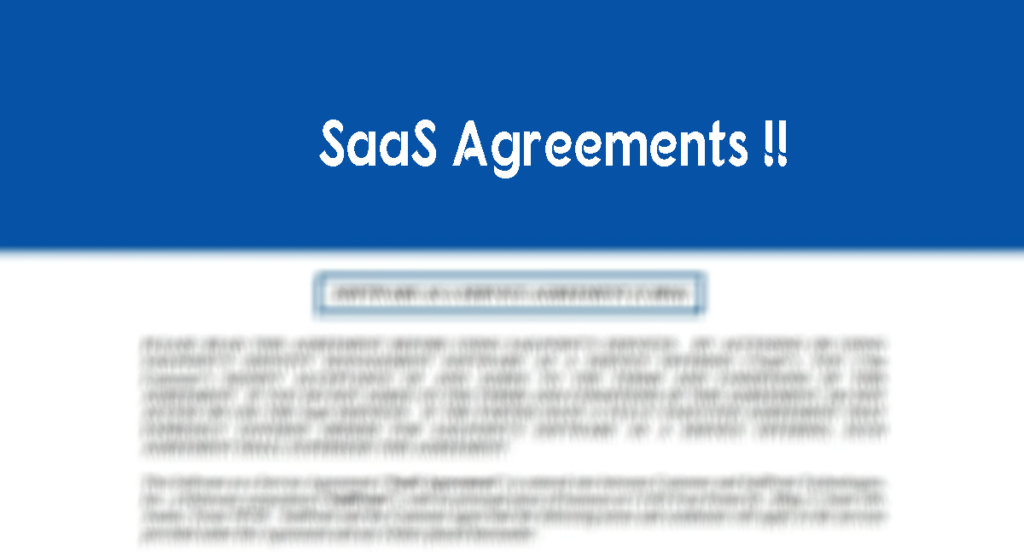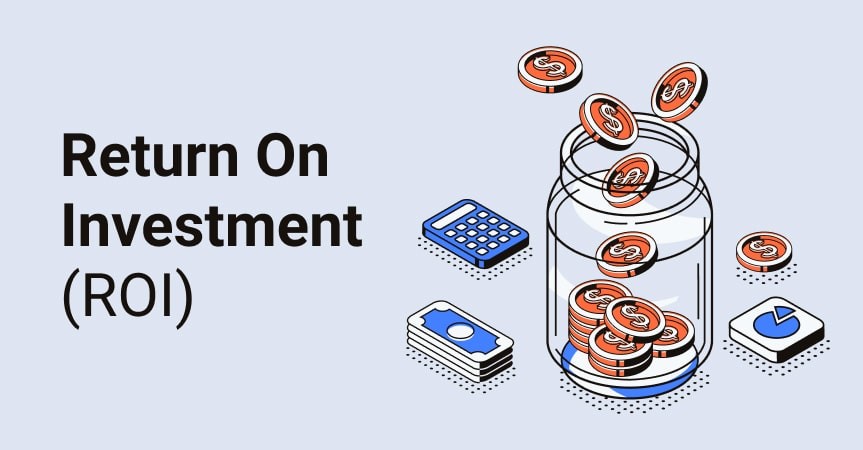Navigating the complexities of a SaaS agreements can often feel like trying to decipher an alien language. Though it may seem intimidating, with the correct comprehension and assistance, navigating a SaaS agreement is far from impossible.
Often you’ll hear business leaders grumbling about how SaaS contracts are too intricate or confusing. “You can’t fully grasp a SaaS agreement without legal expertise.” This is far from true.
In fact, countless entrepreneurs manage their own SaaS agreements, successfully navigating through terms such as data security, contract automation and more.”80% of businesses adopting cloud services have seen improvements within 6 months of moving to the cloud.”— Intel Security
Decoding SaaS Agreements: A Guide for Entrepreneurs
Unravel the complexities of SaaS agreements. Learn about data security, contract automation, and key elements to bolster your business strategy.
The Importance of SaaS Agreements
In the world of SaaS services, agreements play a vital role. These contracts, unlike traditional ones, don’t involve any physical goods exchange but provide access to software and data hosted centrally over the internet.
The Unique Nature of SaaS Contracts
SaaS contracts are inherently complex with dozens or even hundreds of individual clauses covering aspects from service availability to intellectual property rights details. Navigating these intricacies can become overwhelming for businesses dealing with SaaS vendors manually.
Understanding how these intricate contracts work is crucial for companies engaging in SaaS agreements. This knowledge enables them to negotiate better terms while ensuring compliance with laws governing their operations such as the California Online Privacy Protection Act (CalOPPA).
Data Ownership and Security: A Core Element
An important differentiator within SaaS agreements lies in how they handle user-generated content along with personal data collection methods employed by SaaS providers.
The rules around data ownership dictate who controls information created during contract execution – whether customers retain full ownership rights or only have limited usage privileges under certain conditions.
Besides understanding data ownership stipulations, maintaining high standards for security is equally essential since non-compliance could lead to hefty penalties under regulations like CalOPPA and the California Consumer Privacy Act (CCPA).
To avoid operational bottlenecks due to contractual complexities, it’s imperative that organizations understand all facets related to their SaaS agreement – be it the expected service delivery model or specifics regarding payment terms limitations, etc. This understanding facilitates smoother business processes while delivering top-notch SaaS services.
Key Takeaway:
Cracking the code of SaaS agreements is no walk in the park, but it’s vital for your business. Understanding these contracts’ complexities—from data ownership to security standards—can help you negotiate better terms and avoid legal pitfalls.
Key Elements to Include in Your SaaS Agreement
The foundation of a successful Software as a Service (SaaS) business lies within its SaaS agreements. A well-crafted agreement is your roadmap for navigating the complexities of this software delivery model, from access rights and customer service to data ownership and security.
Your SaaS contract should be crystal clear on these matters.
In the words of Benjamin Franklin, “An ounce of prevention is worth a pound of cure.”
A comprehensive understanding of each clause included in your SaaS contracts will ensure that you’re not caught off guard when faced with unexpected situations or disputes. Here’s what you need to know:
Understanding Data Ownership and Security in SaaS Agreements
Dig deep into issues surrounding data ownership. You must explicitly state who owns user-generated content while using your platform. Moreover, it’s crucial how personal information collected by your SaaS service adheres to laws like the California Online Privacy Protection Act.
Bonus points if you can articulate robust procedures for handling sensitive user information along with protocols followed during any suspected breach affecting privacy or confidentiality.
Navigating License Scope and Limitation of Liability Clauses
Tailor-fit license scope clauses according to specific needs. The licensing terms mentioned under this section dictate usage rights granted, which include details about permitted uses, restrictions on copying or modifying software code, etc., thus preventing misuse while protecting intellectual property rights.
This isn’t an exaggeration but rather adding selective truths, making sure all necessary components are included becomes imperative considering every aspect plays an essential role in providing legal protection both ways.
You may also want to familiarize yourself with other key elements often found in SaaS agreements, such as performance objectives, master services language, subscription plan specifics including term termination provisions, expected levels of SLAs (service level agreements), detailed payment terms, among others.
Remember: being prepared always pays dividends, especially when dealing with intricate aspects related to running top-notch SaaS services compliantly governed
Key Takeaway:
Like a well-crafted roadmap, a solid SaaS agreement navigates the complexities of your software business. It covers everything from data ownership to license scope, ensuring you’re never caught off guard. Remember: an ounce of prevention is worth a pound of cure – so make sure every clause in your contract is crystal clear.
The Different Types of Agreements Needed by SaaS Companies
Operating a prosperous SaaS organization is not simply about providing first-class services; it also necessitates managing through diverse contracts that form the basis of your business dealings, making sure both sides are aware of their privileges and duties. It also involves navigating through various types of agreements that form the backbone of your business relationships, ensuring both parties understand their rights and obligations.
Importance of Terms of Use and Privacy Policies for SaaS Providers
A terms-of-use agreement sets forth rules regarding acceptable behavior, user responsibilities, dispute resolution mechanisms, among other things. This contract plays an integral role in defining how customers can use your software services while protecting your company’s interests at the same time.
Besides this, privacy policies are another critical legal document required when collecting personal data from users. Laws like the California Online Privacy Protection Act (CalOPPA) mandate websites to disclose certain details about their practices within a publicly accessible privacy policy if they collect personally identifiable information.
Your privacy policy should detail how you handle customer data, including its collection methods, storage procedures, as well as utilization strategies such as whether it’s shared with third parties or used for marketing purposes. Drafting clear-cut privacy policies helps avoid potential legal pitfalls down the line while reinforcing credibility among customers concerned about data security.
Diversity in Contractual Documents
In addition to these two core documents, there lies a variety of other contractual arrangements necessary depending on specific operational needs or unique circumstances faced by different companies providing SaaS services:
- Service Level Agreements (SLAs): An SLA outlines expected performance standards like uptime guarantees or response times during outages; it serves as an assurance to clients about service availability and reliability.
- Data Processing Addendums: If handling EU citizens’ data under GDPR regulations, then Data Processing Addendums become essential; they ensure compliance with stringent European Union data protection norms, thereby avoiding hefty fines associated with non-compliance.
- Licensing Contracts: Sometimes businesses may need licensing contracts if incorporating third-party technology into their platform; such agreements define usage rights protecting against intellectual property infringement claims later on
Key Takeaway:
Navigating SaaS agreements is a crucial part of running a successful company, from setting user terms and privacy policies to handling diverse contracts like SLAs, Data Processing Addendums, and licensing deals. They’re not just legal necessities but also tools for protecting your interests while ensuring customer trust.
Streamlining Your Contract Process with Automation
The realm of SaaS contracts can often seem labyrinthine, especially when you’re handling them manually. But there’s a solution: automation.
Leveraging Contract Lifecycle Management Solutions
Contract lifecycle management solutions are the linchpin to managing your SaaS agreements efficiently. These tools centralize all your contracts, facilitating collaboration and simplifying contract development.
Beyond mere storage, these platforms also offer notification features that keep you in-the-know about impending deadlines or necessary actions related to your contracts—preventing missed opportunities or potential breaches due to overlooked terms or dates.
A prime example is Ironclad’s Data Repository. This tool not only provides such capabilities but also includes advanced analytics for understanding how well your agreements perform over time. With this resource at hand, tracking contractual obligations becomes less daunting and more efficient.
Moving beyond just storing and monitoring contracts, automating workflows forms another crucial aspect of streamlining the contract process. Workflow automation involves creating predefined templates that guide teams through each step involved in drafting an agreement—from initiation till closure.
This standardizes the entire procedure while reducing errors caused by manual data entry or oversight during negotiation stages. Ironclad’s Workflow Designer offers templated workflows designed specifically for this purpose—it makes navigation through various stages of contract development simpler while ensuring consistency across different agreements within a company’s portfolio.
By integrating automated processes into managing SaaS service level agreements (SLAs), businesses can channel their resources towards core operations rather than administrative tasks associated with contract management—an advantage worth considering as part of any organization’s strategy towards operational efficiency.
Unravel the SaaS contract maze with automation. Centralize, collaborate and simplify your agreements while avoiding missed opportunities or breaches. Dive into operational efficiency today. #SaaS #AutomationClick to Tweet
Master Services Agreements Purchase Considerations
Taking a decision to acquire an MSA should not be done hastily. Several factors, including ownership of service data, intellectual property rights, and payment terms, require careful consideration.
Service Data Ownership: Expect the Unexpected
In any MSA, it is crucial to consider who will own the data generated during service delivery. This may include customer information or operational metrics collected by your SaaS provider.
The agreement should provide clear guidelines on what happens to this valuable resource when contracts expire or are terminated. It is essential to ensure that all sensitive company information will be properly erased from vendor systems at such times.
Navigating Intellectual Property Rights in MSAs
Determining intellectual property rights is another critical aspect of purchasing MSAs for SaaS companies. These agreements should clearly define which party retains ownership of developments made during the course of service availability, such as software enhancements or proprietary methodologies designed for delivering specific services. Joint ownership may also come into play if both parties contribute significantly to these advancements.
Remember, every detail matters when considering the purchase of master services agreements, so it is always advisable to seek professional advice before signing any contracts.
Limits on Payment Terms: The Fine Print Matters
An often overlooked aspect when negotiating MSAs is setting fair limits on payment terms to protect business interests without jeopardizing long-term vendor relationships.
For instance, agreement clauses should explicitly outline penalties associated with late payments or non-payment scenarios. This approach helps avoid potential disputes down the line, ensuring smooth operation without disruptions due to unexpected financial disagreements between the parties involved.
Taking the time now to thoroughly understand each element can save headaches later and help ensure compliance with laws governing SaaS vendors’ operations, such as the California Online Privacy Protection Act. This safeguards your business reputation while providing top-notch SaaS services.
Key Takeaway:
When acquiring a Master Services Agreement, don’t rush. Pay attention to data ownership, intellectual property rights and payment terms. Keep your eyes peeled for the fine print on late payments and non-payment scenarios. And remember – when in doubt, seek professional advice.
Navigating Intellectual Property Rights in SaaS Contracts
Intellectual property rights, or IPRs, are a cornerstone of SaaS contracts. These cover creations from the mind such as inventions, artistic works, designs, and symbols used commercially.
In terms of SaaS agreements, intellectual property can involve various components including software code, graphical user interfaces, or unique business processes related to your service. Therefore, it’s crucial for both providers and users alike to understand how these IPRs function within a contract.
The Ownership Dilemma
A key factor when discussing IPR in SaaS contracts is ownership – who owns what gets created during the course of service availability? This question becomes particularly relevant if there are customizations or new developments during an agreement term.
This situation could become even more complex if multiple parties contribute towards creating something new – so who then holds those IP rights?
Licensing Terms Explained
An associated concern revolves around licensing terms which dictate how customers may use your product. Are they granted only usage rights or do they also get some form of ownership stake?
The solution often lies in crafting careful contractual language that clearly sets boundaries while protecting your interests at all times. Here are several examples of how you might approach this task effectively with well-crafted legal strategies.
Safeguarding Your Interests: An Overview
To protect their interests, many companies choose to retain all intellectual property rights linked with their services while granting clients non-exclusive licenses for use. More information here suggests ways startups can safeguard their intellectual properties through effective legal measures.
This ensures control remains firmly with them yet still allows clients access under agreed-upon conditions. It’s essential, however, that any such arrangements are explicitly laid out within your contract, leaving no room for misunderstanding later on.
Key Takeaway:
Understanding and navigating intellectual property rights in SaaS contracts is crucial for both providers and users. Ownership dilemmas can arise, especially with customizations or new developments. Careful contractual language around licensing terms can help set clear boundaries and protect your interests.
State-Specific Insights into SaaS Agreement Pricing
Diving headfirst into the SaaS market? Understanding SaaS agreement pricing is not universal; location can significantly influence the cost due to local regulations and economic conditions. Differing laws and economic circumstances can cause prices to vary drastically from area to area.
The impact of location on your bottom line is real.
In tech-centric states like California, for instance, you may find yourself paying premium rates due in part to high demand and competition among SaaS vendors. Conversely, in less developed markets or emerging economies where cloud-based software services are still gaining traction, costs might be more affordable as companies vie for their share of the pie.
Regulations: The Invisible Hand Guiding Prices
No business operates within a vacuum—especially not when it comes down to data protection laws governing SaaS providers’ operations such as those stipulated by the California Online Privacy Protection Act which necessitate robust security measures influencing operational costs reflected in contract prices.
Taxes too play an integral role with jurisdictions imposing taxes on digital services altering overall cost structures affecting how much customers end up shelling out for their subscriptions.
Economic Conditions: An Unseen Influence On Pricing Strategies
A prosperous economy often translates into businesses willing to invest heavily in technology solutions, allowing vendors to price products at a premium. On the other hand, challenging times could see lowered rates, attracting a wider customer base seeking budget-friendly options without compromising quality service availability.
Navigating Market Dynamics Across States: The unique market dynamics each region presents also have direct implications on how contracts are priced; thriving tech hubs usually command higher prices while areas with fewer enterprises offer competitive rates, encouraging adoption of these innovative offerings. The SaaS Agreement Pricing by State guide provides comprehensive insights into regional differences, helping stakeholders make informed decisions about expansion plans based on an accurate understanding of various markets.
Key Takeaway:
When it comes to SaaS agreement pricing, there’s no cookie-cutter approach. Factors like local regulations, economic conditions, and market dynamics can make prices swing wildly from state to state. So before you dive in headfirst, do your homework on the unique characteristics of each market.
Ensuring Compliance with Governing Laws
The realm of SaaS services is no stranger to the intricate web of governing laws. As a provider, you are tasked not only with delivering top-notch software solutions but also ensuring your operations align perfectly within legal frameworks.
Compliance: More than Just a Buzzword in SaaS Agreements
In the words of Thomas Jefferson, “Ignorance of the law is no excuse.” This statement holds especially true for SaaS vendors who must navigate complex regulations like the California Online Privacy Protection Act (CalOPPA) and other data protection acts globally.
Your business’s reputation hinges on how well it respects these legislations while collecting personal data or handling content generated by users. But that’s just one part of this multifaceted equation.
Digging Deeper into Intellectual Property Rights
Your journey through compliance doesn’t end at user privacy; intellectual property rights form another crucial checkpoint in this path. Understanding copyright laws can protect both your company and its customers from potential infringement issues related to proprietary code or user-generated content within your platform.
Avoiding pitfalls here requires more than just understanding – it demands proactive measures such as clearly defining ownership details right inside service agreements.
Governing Laws & Contractual Commitments
Being compliant isn’t merely about knowing what rules apply – It’s equally essential to communicate them effectively via contractual commitments.
The role played by contracts works towards safeguarding businesses against future disputes while fostering trust among clients who know their information lies secure under lawful conditions.
So next time when drafting an agreement, remember – It’s not just a document but rather an assurance between two parties navigating together through murky waters guided by the lighthouse called ‘Law’.
Navigating the web of SaaS laws? Remember, it’s not just about compliance but also clear communication in contracts. Protect your business and foster trust with well-drafted agreements. #SaaSLaws #BusinessStrategyClick to Tweet
Conclusion
So, you’ve made it through the labyrinth of a SaaS agreement.
You’ve unraveled its intricacies and navigated your way around key elements like data security and contract automation.
No longer are terms such as “license scope” or “performance objectives” alien to you.
You now understand the importance of state-specific pricing insights, compliance with governing laws, and intellectual property rights in SaaS contracts.
Master services agreements don’t seem so daunting anymore either.
And let’s not forget about the game-changing power of automating workflows for SaaS contracts!
No longer just an entrepreneur, you’ve become a knowledgeable biz exec ready to face any contract-related hurdle.
If you want to learn more about this, sign up for my newsletter.


